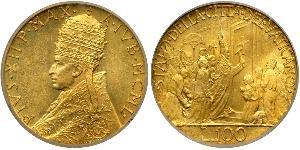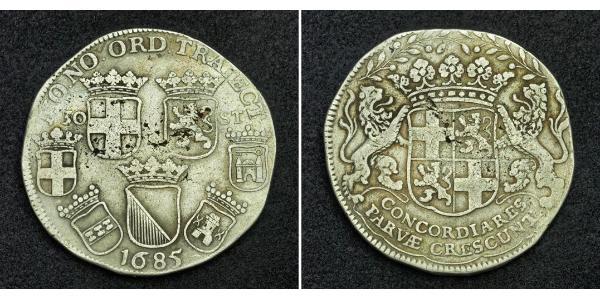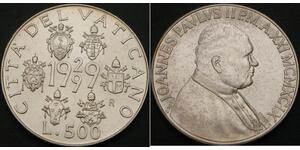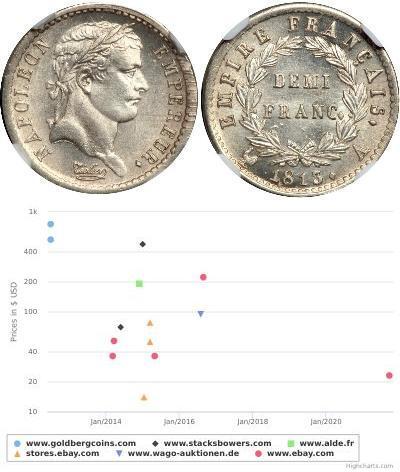(Vendida por $170.0)
1685, Netherlands, Utrecht (City). Silver Daalder (30 Stuivers) Coin. R!
Mint Year: 1685
Mint Place: Utrecht (Netherlands)
Denomination: 30 Stuiver (Daalder)
Reference: Delmonte 975, KM-73. R!
Condition: Minor planchet imperfections (mint-made), as usual for this short-lived issued, otherwise about XF!
Weight: 15.62gm
Diameter: 36mm
Material: Silver
Obverse: Legend above seven crowned shields and date (1685). Value (30-ST) split in fields.
Legend: MO . NO . ORD . TRAICT
Reverse: Crowned shield of UTrect, supported by roaring lions. Motto below.
Legend: CONCORDIA RES PARVAE CRESCUNT
Expanded: CONCORDIA RES PARVAE CRESCUNT ("Unity makes little business grow!")
The Republic of the Seven United Netherlands (or "of the Seven United Provinces") (Republiek der Zeven Verenigde Nederlanden/Provinciën; also Dutch Republic or United Provinces in short, Foederatae Belgii Provinciae or Belgica Foederata in Latin) was a European republic between 1581 and 1795, in about the same location as the modern Kingdom of the Netherlands, which is the successor state.
Before 1581, the area of the Low Countries consisted of a number of duchies, counties, and independent bishoprics, some but not all of them part of the Holy Roman Empire. Today that area is divided between the Netherlands, Belgium, Luxembourg and parts of France and Germany. The Low Countries in the 16th century roughly corresponded to the Seventeen Provinces covered by the Pragmatic Sanction of 1549 of Holy Roman Emperor Charles V.
Through marriage, war or sale, these states were acquired by the Habsburg emperor Charles V and his son, king Philip II of Spain. In 1568, the Netherlands, led by William I of Orange, revolted against Philip II because of high taxes, persecution of Protestants by the government, and Philip's efforts to modernize and centralize the devolved medieval government structures of the provinces. This was the start of the Eighty Years' War.
In 1579, a number of the northern provinces of the Netherlands signed the Union of Utrecht, in which they promised to support each other in their defence against the Spanish army. This was followed in 1581 by the Act of Abjuration, the declaration of independence in which the provinces officially deposed Philip II.

100 Lira Estados Pontificios (752-1870) Oro
grupo tiene 16 monedas / 15 precios
Add coin to this group

25 Shilling Republic of Austria (1955 - ...
grupo tiene 10 monedas / 9 precios
Add coin to this group

10 Reis Reino de Portugal (1139-1910) Co ...
grupo tiene 2 monedas / 2 precios
Add coin to this group
9 coins were uploaded from 2025-06-04 to 2025-06-11
Una de ellas es:




















